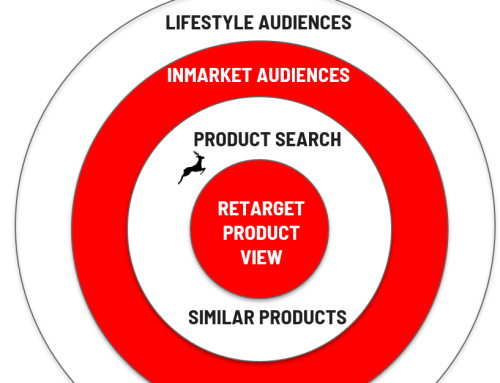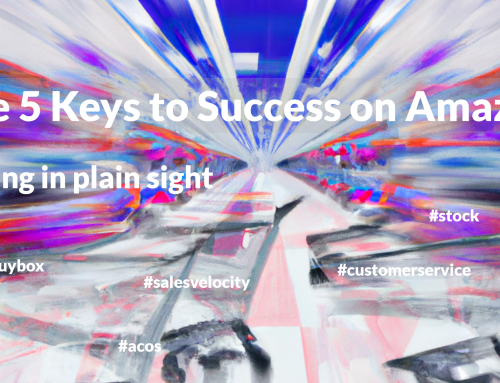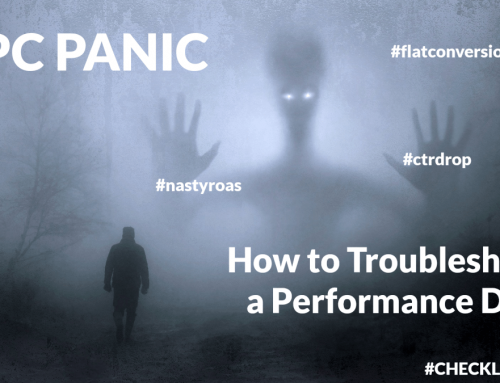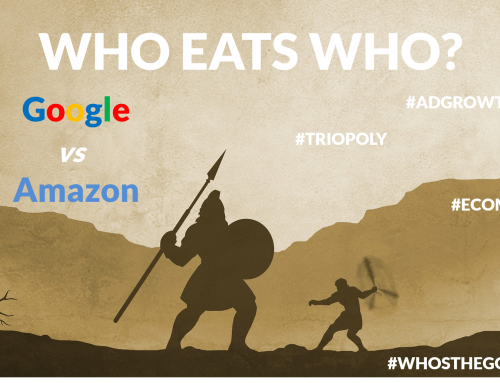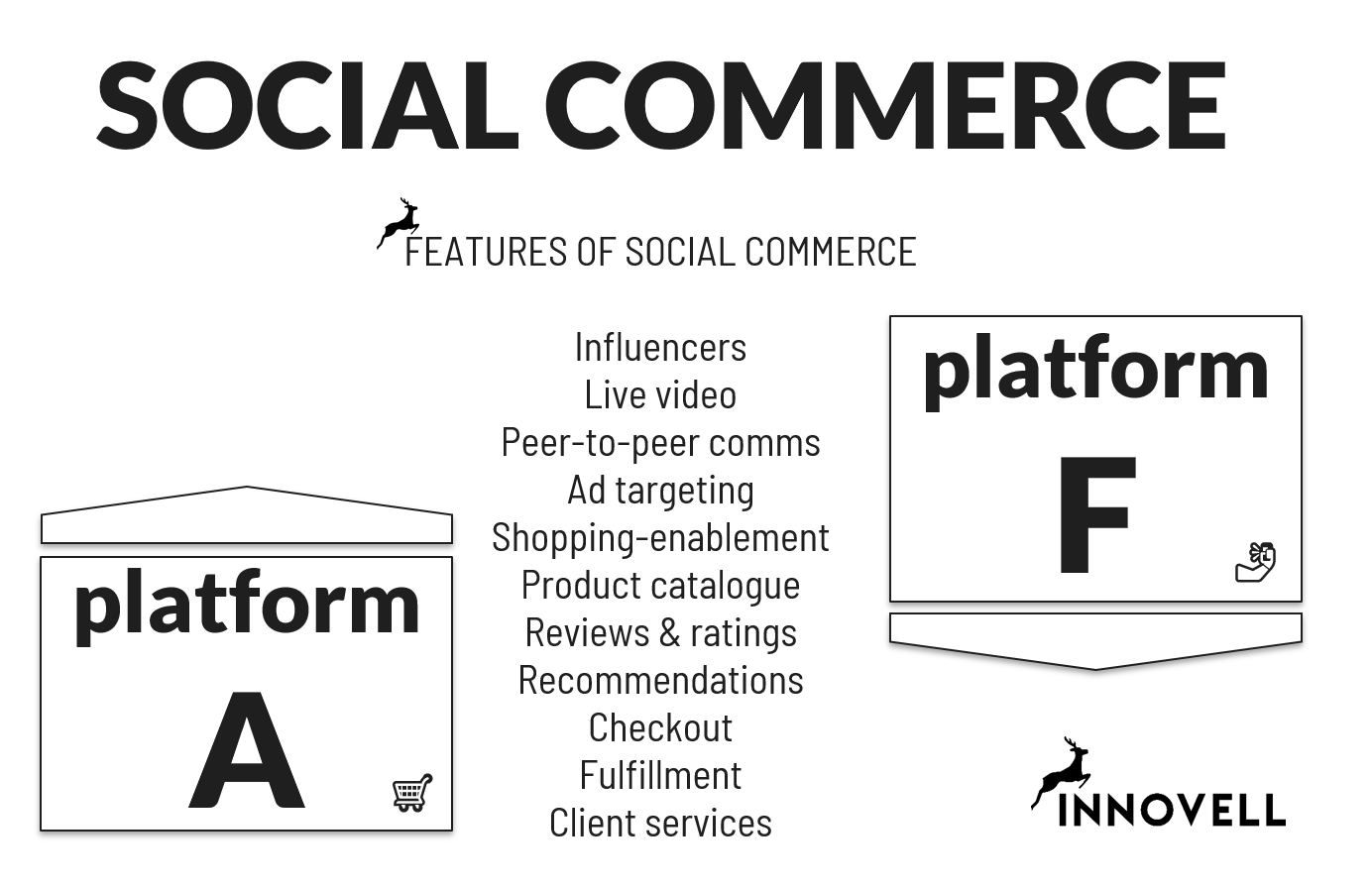
The Social Commerce Dream
Social Commerce is the dream of impulse buying on digital media come real. Careless, flawless, and not least frictionless shopping on mobile, tablet, surface and yet-to-be-invented digital interaction devices with augmented reality. You may agree that we are still a bit far from it in 2021, or perhaps you are one of the pioneering consumers trying out every new way of shopping available.
With social media, brands can interact directly with consumers. So, marketing has become interactive, the customer voice has become audible, and social commerce could have the power to make shopping great again.
What is social commerce?
The concept of Social Commerce was coined by Yahoo back in 2005. It represents the activation of a purchase behaviour triggered by social media interactions. But Yahoo couldn’t make it work, and more than 16 years later, it is still looking for its final form. Ecommerce first emerged out of dusty distance-buying post-order catalogues. Its first embodiment on the internet was text-rich, image-poor and devote of any emotional dimension. In a parallel trend of comparison shopping, rational buying became the default for internet shopping and deals-sites were the most fun places around.
In recent years, the internet has become more commercial, and by projection both more fun and more superficial. Social media helped make a shift away from human-to-machine relations and back to human-to-human relations. At least we got that far. Emojis conquered text messages crying out loud, that “emotions are back”. 📢❤💥
Perhaps these are indications that full-scale social commerce is actually possible despite its long journey in the dark.
What features will make social commerce successful?
The features of social commerce allow for a wholesome social experience within in a full ecommerce journey. We propose to define its components as the following list of commerce-enabling elements:
- A product catalogue (also called a product feed)
- A product selection and check-out feature
- Peer-to-peer (social) communications related to products and services
- Influencer integration
- Live video
- Behaviour-based ad targeting
- Shopping enablement in rich media (such as product tagging in images or video)
- Reviews, ratings
- Recommendations
- Fulfillment
- Client services
Social commerce today emerges from two different horizons: On the one hand, you have the social media-enabled ecommerce into which Amazon falls. And on the other hand, you have the ecommerce-enabled social media such as Instagram and the Facebook Shop. Let’s have a look at these species in more detail.
Social-media enabled ecommerce
Most ecommerce platforms integrate a number of the elements we mentioned, but Amazon is the most advanced social media-enabled ecommerce model with reviews and ratings, peer recommendations and “people also bought” as driving elements. We can also put Etsy, Vinted and Shein in that category. To take the example of Amazon, it is pushing further into social media and hoisting itself up the funnel with things like the following:
- Amazon posts: social posts on “brand stores” and now coming to product detail pages
- Influencer integrations: activating the ecommerce dimension of influencer partnerships by allowing them to build a store front directly on Amazon with products from their partners
- Live commerce: live video product presentations of products on Amazon Live. Around the clock Shoppingtainment.

Where Amazon is still very much at the end of the purchase journey for most users, it is trying to build a more entertaining user journey opening up for upsells and impulse buys. It’s social gaming platform Twitch may come to play an important role in the set-up moving forward. The strongest element in Amazon’s social commerce play is clearly the Live commerce initiative. It feels like the return of TV Shopping and merchants are flocking to the opportunity to present their products in a live stream on the platform. Build more awareness, give their products a more humane touch, show the founders, reach new audiences, nudge users further towards the purchase. Real humans, real emotions, real persuasion.
Ecommerce-enabled social media
On the other extreme of the spectrum, Pinterest and Instagram have long been considered the most advanced social commerce players. With slowing user growth, it has become essential to monetize their audiences more strongly in order to survive, and ecommerce seems like a much more powerful economic model than advertising.
Instagram has the power to recommend fashion items that make people buy. At least that is the case for Andreas Reiffen, founder of Crealytics and heavy internet users. Where traditional commerce was always based on the location, location, location paradigm whereby the location of a business and its flow of traffic was determining for its’ success, the success parameter for social commerce could be closer related to the quality of the recommendation.
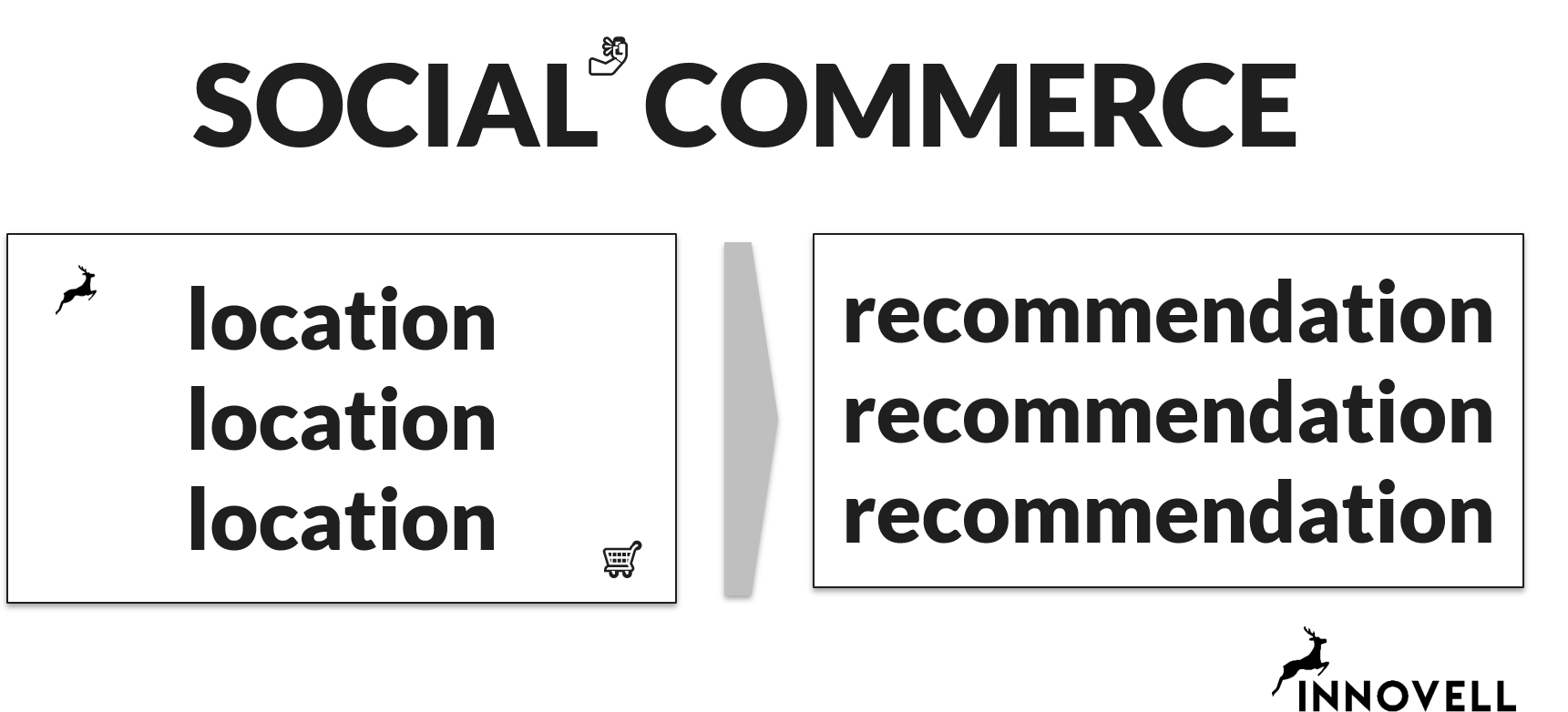
Instagram’s Mothership, Facebook has picked up the challenge in a serious manner with Facebook Shops, a new commerce-oriented solution after their Places and Marketplace. One of the strongest motivators for advertising spend being ecommerce, it is crucial for Facebook to make the connection, especially in a world where cross-platform data integration becomes increasingly difficult (read more about the battle of the cookies here). The impact of advertising higher up the funnel is becoming more difficult to measure and prove.
The most significant step for Facebook Shops is the integration of a payment solution which is already operational in the US market. This will allow for an end-to-end shopping experience from discovery to purchase without leaving the platform. It also opens up for an interesting opportunity: A Facebook Shop with Amazon fulfillment at the back end (combining a Facebook Shop with payment and an Amazon Multi-Channel Fulfillment solution). Ecommerce without a webshop, who would have expected that?
And let’s not forget Snapchat and TikTok. TikTok is building out its advertising offering and is already integrating shopping functionality into the mix. TikTok Shopping, however, is mainly an integration with Shopify enabling for a simple pass-through from the social media to the shop. It looks like social commerce-enablement is becoming a mainstream feature for all platforms. Snapchat has long been integrating its offering with ecommerce solutions and has a similar force of persuasion to TikTok among its users. Snapchats social commerce case studies are an interesting read. Its main tool for ecommerce enablement is a deeplinking feature for linking ads to shops. For younger audiences, these platforms have an enormous persuasion power, but the ecommerce-enablement still requires jumping to another channel.
Ecommerce everywhere
Over at Google, there is pondering as well. Already three years ago, Google went on a mission to provide “shopping everywhere”. I called it an Ozone-approach to shopping (ozone is a variety of oxygen present everywhere around us in the air and with the interesting characteristic that too high doses can be lethal to human beings).
The ozone initiative aimed to provide ecommerce activation in all of Google’s media channels. In search marketing it is already present via Google Shopping and product ads which appear in an integrated manner into search results. But Google is pushing this further with a purchase button and an integration with Google Pay. I call it the Google Buy button although it appears to have a less Amazon-like name in Google documentation.
It is also working on an integration of a purchase function inside videos on YouTube and in images. The approach is similar to the tags Instagram has enabled in its images to link to a product page, but it is reasonable to assume that Google might push this further via image recognition and propose purchases of practically anything you see.
There is an app for it
But what if it all ended up in an app instead. With the open internet being closed up and user journeys more restricted, the place to be is in an app. The superapp phenomenon is expanding beyond China, where WeChat has always been the app to offer everything: Uber, Paypal, Spotify, Messenger, eh I mean WeChat transport, WeChat payment, WeChat Music, WeChat just chat etc.
Superapps are social media by definition and some are natively ecommerce enabled. Perhaps social commerce is already here.
Social Commerce Champions
Taking a first look at the various contenders to the title of social commerce champion and giving them a first rough rating on the features listed at the beginning of the article, the top contenders seem to be Amazon, Instagram (Facebook) and Google. The triopoly of digital advertising are seriously addressing this.
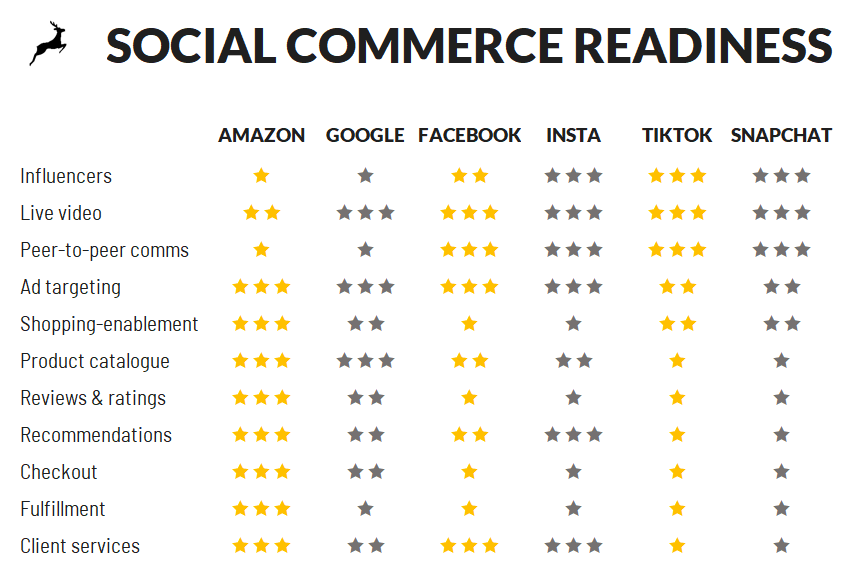
Rough rating of the main emerging platforms for social commerce. Please disagree and contact the author for improvement 🙂
Get social proof, inspire and reach your audience via ads or influencers
Instagram and the Facebook Shop seem like interesting places to go in 2021. For ecommerce players strongly anchored in Amazon, there is social turn to take and a live commerce opportunity to seize where available (US so far). The key will be to understand end users better and engage them with content earlier in the user journey. For brands with little ecommerce penetration, it will be about learning how to drive users to the sale and to take the purchase and fulfilment experience into consideration. An impulse-buy with a 7 day deliver span may not be a viable solution for social commerce. Social commerce is fast, fluid, frictionless and fulfilling.
And in the future, augmented reality may allow for immersive experiences merging the online and offline user experience and creating an entertaining and fulfilling user experience. Facebook heading for the Metaverse and Snapchat activating Augmented Reality in its campaigns, may be signs of an emerging social commerce paradigm.


